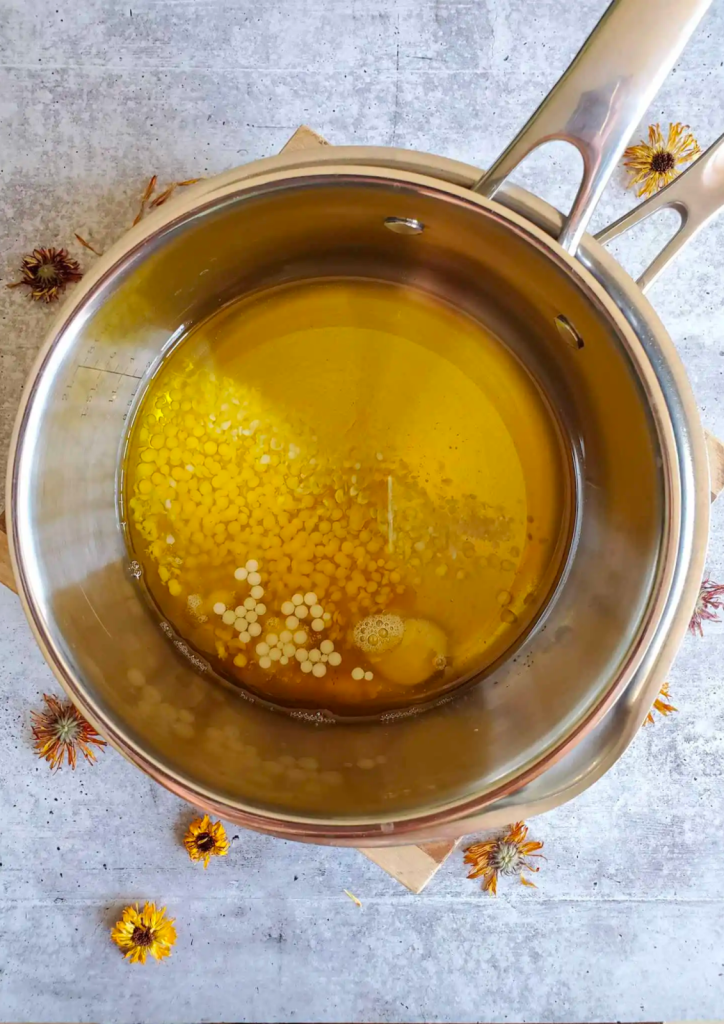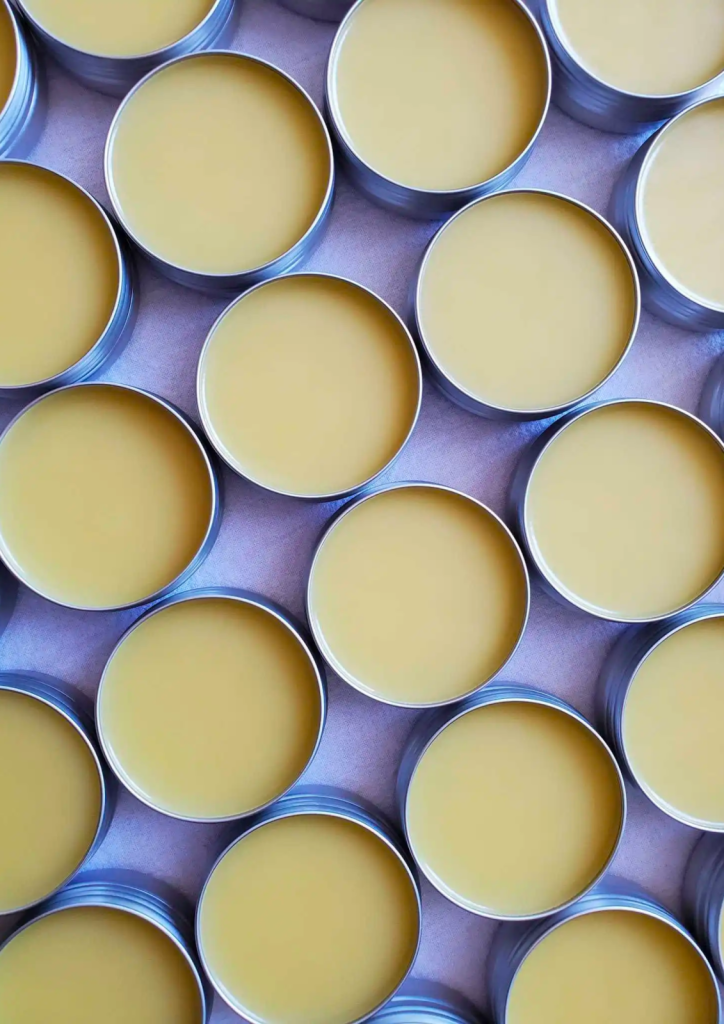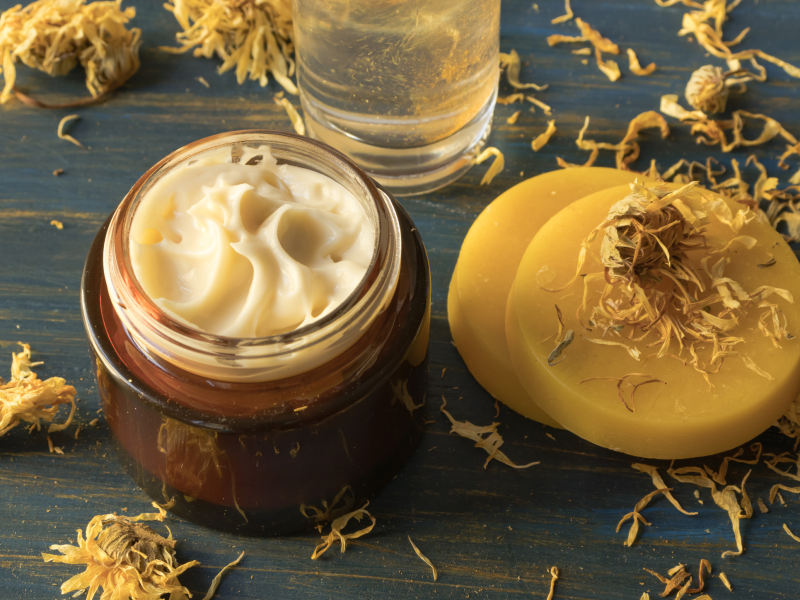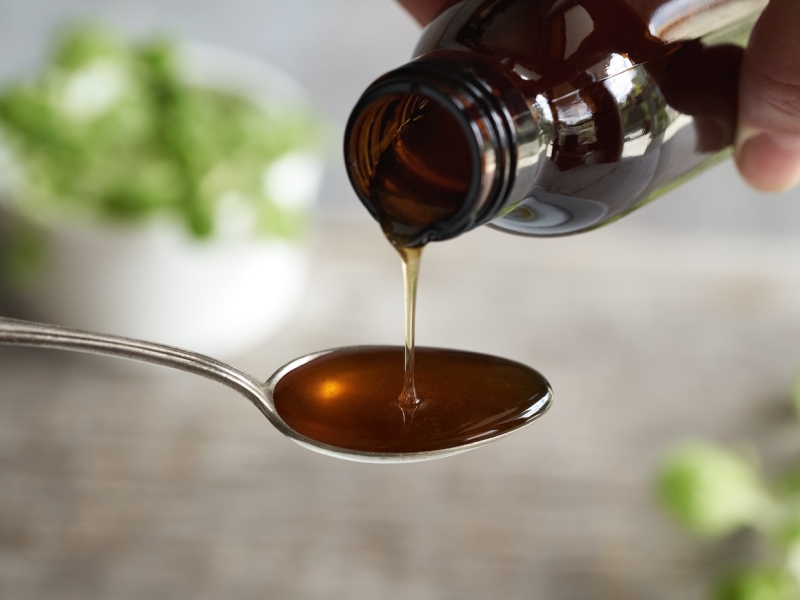How to make a herbal salve
Learning how to make a salve is a fantastic way to avoid chemical based products and use natural ingredients and the healing power of herbs. These homemade remedies are not only simple to create but also incredibly versatile and customisable to your needs and preferences. The process of making a herbal salve involves two key steps: creating a herb-infused oil and transforming that oil into a balm-like consistency – more on that below.
What is a herbal salve?
A herbal salve is an essential part of any Herbal First Aid Chest. It is a topical ointment made by infusing medicinal herbs into a carrier oil and combining it with a thickening agent, traditionally beeswax. Other ingredients, such as shea butter, cocoa butter, or coconut oil, can also be added to adjust texture, richness, and skin-conditioning properties. This oily medium carries the fat-soluble herbal compounds deep into the skin and surrounding tissues. Unlike creams or lotions, salves typically contain little or no water, making them richer and more concentrated. A herbal salve is ideal for soothing abrasions, bruises, strains, dry or chapped skin, and can even be used as chest rubs or lip balms—a versatile and nourishing addition to your home remedies.
What is a herbal salve used for?
Herbal salves can be used for all sorts of topical ailments. Here are some common uses:
- Moisturising dry skin: Salves made with herbs like calendula or chamomile are excellent for soothing and hydrating dry or cracked skin.
- Healing minor wounds and burns: Anti-inflammatory and antibacterial herbs such as lavender or plantain can aid in the healing process for cuts, scrapes, or sunburns.
- Easing aches and pains: Arnica or comfrey-infused salves can help relieve muscle pain, bruising, or joint stiffness.
- Reducing skin irritation: Herbs like St John’s Wort are known to calm rashes, eczema, or insect bites.
Which herbs can I use to make a herbal salve?
Below is a list of herbs that you can find on our website that can be made into herbal salves. These are our favourites:
-
Arnica, Meadow
Price range: £3.25 through £4.00 Inc VAT -
Calendula
£2.75 Inc VAT -
Lavender, English
Price range: £2.75 through £7.00 Inc VAT -
Mullein
Price range: £2.50 through £6.00 Inc VAT -
Pokeroot
£3.00 Inc VAT
There are of course many more herbs that can be made into a herbal salve:
- Burdock root
- Chamomile flowers
- Lemon Balm leaf
- Marshmallow root
- Mint leaf
Recipe for a simple herbal salve
Prep Time
30 mins
Cook Time
15 mins
Cooling Time
2 hours
Ingredients (per batch)
- Infused herbal oil: 4 parts (e.g., 100 ml). See our blog on how to make an infused massage oil for more details.
- Beeswax: 1 part (e.g., 25 g; adjust for desired firmness)
- Optional: shea butter, cocoa butter, or coconut oil – up to 1 part (e.g., 25 g) for extra creaminess
- Optional: essential oils – a few drops for scent or added herbal benefits
Equipment
- Clean salve jars or tins
- Heatproof bowl or bain-marie
- Small ladle or heat-proof funnel for pouring into tins
Method
- Prepare your infused oil: Measure the amount of infused oil you want to use.
- Melt the beeswax and optional butters: Place the oil in a heatproof bowl over gently simmering water. Add beeswax (and any optional butters) and stir occasionally until fully melted.
- Add essential oils: Remove from heat and stir in a few drops of essential oils if desired.
- Pour into containers: Carefully fill clean jars or tins, leaving a little space at the top.
- Cool and store: Allow the salve to solidify at room temperature. Once cooled, seal the containers and store in a cool, dry place.
Your homemade herbal salve is now ready to use! It should last up to six months if stored in a cool and dry spot.
Tips
- Apply as you need a few times a day.
- To see if the salve will set to the right consistency and has enough beeswax in, take a teaspoon of the hot oil, place it on a saucer and put it in the fridge. If it sets after a few minutes then you are ready. If not, add a little more beeswax.











